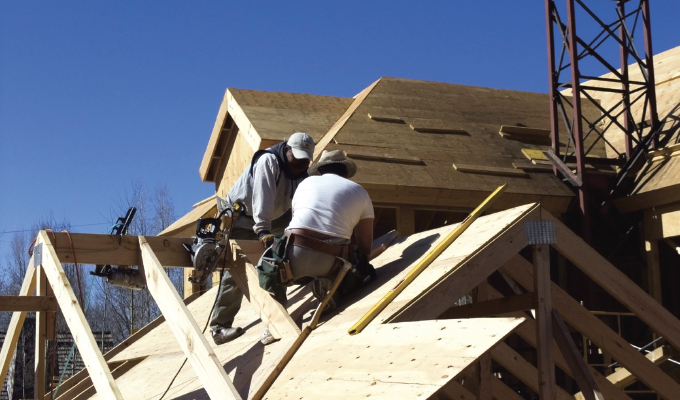Plywood has become a commonplace material in the modern world, but its origins actually date back to about 3000 BC, when ancient Egyptians fashioned thin planks of wood to boats and structures to add stability. Over the decades, it has undergone significant advancements in both its composition and applications, driven by industrial innovations and increasing demands for sustainability.
MODERN INNOVATIONS
Plywood panels have historically been valued for their strength and resistance to warping, thanks to the cross-lamination of wood veneers. Technological advancements including new types of adhesives and production techniques have further improved the durability, consistency, and performance of the material.
In recent years, however, the plywood industry has begun to push the boundaries, exploring its aesthetic potential, sustainability, and application versatility. One highly notable industry advancement to emerge from these explorations is the integration of digital printing into panel production. For instance, Garnica’s Infinity Plywood utilizes this revolutionary technology to replicate the look of traditional hardwood veneers on a poplar plywood core, producing visually striking and realistic wood patterns while also offering a more sustainable and cost-effective alternative to rare and endangered hardwood species. This aesthetic innovation has significantly broadened the versatility of plywood, from a purely utilitarian material into a decorative element. Additionally, plywood manufacturers are currently exploring its potential as both a fire-retardant building material and as a weather-resistant solution for outdoor applications.
SUSTAINABILITY FACTORS
Sustainability has become another key factor driving plywood innovation. Architects, designers, and professionals in the construction industry are increasingly seeking out sustainable building solutions for their projects to meet regulations and appeal to clients. Manufacturers have responded by adopting eco-friendly practices, including clean energy production facilities and the use of fast-growing tree species such as poplar, which have an extremely high CO2 absorption rate. Some have also chosen to differentiate themselves by participating in voluntary sustainability analyses, including the Environmental Product Declaration and EcoVadis. These advancements reflect a broader industry trend toward greener construction materials, aligning with global efforts to combat climate change.
SCALABILITY AND VERSATILITY
The modern plywood market benefits from improvements in scalability and application versatility. Today’s plywood products are designed to meet the demands of large-scale commercial projects as well as bespoke, custom designs, including curved structures. Enhanced manufacturing processes allow for consistent production quality and the ability to cater to diverse project requirements. Whether it’s for large commercial developments or intricate interior designs, contemporary plywood can be tailored to meet specific project needs, offering solutions for everything from elevator interiors to retail spaces.
FUTURE OF CONSTRUCTION
With the global plywood market projected to reach $73.3 billion by 2027, it is evident that the material is positioned to play an increasingly crucial role in the future of construction. As the industry moves towards more sustainable and efficient building practices, the ongoing innovations and advancements in plywood technology promise an exciting future, laden with possibilities.

Jaime Álvarez is the head of marketing at Garnica and has been with the company for almost 10 years. Fluent in Spanish and English, Jaime lives and works in La Rioja, Spain overseeing marketing initiatives for both the European and North American divisions. He studied Economics at the University of Zaragoza and also obtained a master’s degree in marketing management from the ESIC Business & Marketing school.


